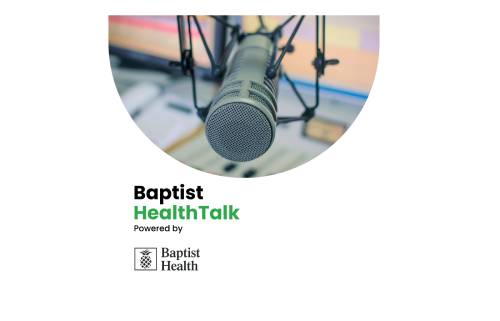
Research
Roundup: 4 Symptoms Linked to Early-Onset Colorectal Cancer; Cognitive Impairment After Strokes is Common But Underdiagnosed; and More
5 min. read
Written By: John Fernandez
Published: May 12, 2023
Written By: John Fernandez
Published: May 12, 2023
These 4 Symptoms Signal Elevated Risk for Early-Onset Colorectal Cancer, Researcher Find
Rates of early-onset colorectal cancer among young adults have risen significantly in recent years. Now, researchers have identified four symptoms that signal an elevated risk for the disease in young people: abdominal pain, rectal bleeding, diarrhea and iron deficiency anemia.
Researchers from Washington University School of Medicine in St. Louis found that having a single one of the symptoms almost doubled the risk; having two symptoms increased risk by more than 3.5 times; and having three or more raised the risk by more than 6.5 times.
The American Cancer Society states that colorectal cancer cases in people under age 55 nearly doubled from 1995 to 2019, from 11 percent to 20 percent. The new study, published in the Journal of the National Cancer Institute, is based on “de-identified health insurance data on more than 5,000 patients with early-onset colorectal cancer,” states the Washington University School of Medicine in a news release.
“Colorectal cancer is not simply a disease affecting older people; we want younger adults to be aware of and act on these potentially very telling signs and symptoms — particularly because people under 50 are considered to be at low risk, and they don’t receive routine colorectal cancer screening,” said senior study investigator Yin Cao, Sc.D., an associate professor of surgery in the Public Health Sciences Division at the Washington University School of Medicine, in a statement.
Two symptoms in particular — rectal bleeding and iron deficiency anemia, a condition in which there are not enough healthy red blood cells to carry oxygen — point to the need for timely endoscopy and follow-up, researchers stated.
U.S. guidelines recommend that people 45 to 75 years of age be screened for colorectal cancer to reduce their risk of dying from this disease. Those who are at above-average risk should consult a physician and be screened at an even earlier age. Colorectal cancer, the third leading cause of U.S. cancer deaths, includes cancer of the bowel, colon and rectum.
However, your screenings should start at an even younger age if the following risk factors apply: a family history of colorectal cancer, a history of inflammatory bowel disease, genetic syndromes such as familial cancerous polyps, a personal history of previous colorectal cancer or benign polyps, or other risk factors. These higher-risk adults, which include African-Americans, should be screened by age 40 or earlier.
Cognitive Impairment After Stroke is Common, Says American Stroke Association Report
More than half of stroke survivors may develop cognitive impairment within a year after suffering a stroke – and one-third are at risk for developing dementia within five years, according to a new American Heart Association scientific statement published in Stroke, the peer-reviewed scientific journal of the American Stroke Association, a division of the American Heart Association.
This new statement, which may expand current guidelines, encourages “comprehensive interdisciplinary care to support stroke survivors with cognitive impairment,” states the ASA. The statement refers to cognitive impairment after both primary types of strokes – the more common ischemic stroke and an hemorrhagic stroke. Stroke is the No. 5 killer and a leading cause of disability in the U.S. (May is Stroke Awareness Month.)
“Cognitive impairment is an often under-reported and under-diagnosed — yet very common condition that stroke survivors frequently deal with,” said Nada El Husseini, M.D., chair of the scientific statement writing committee and an associate professor of neurology at Duke University Medical Center in Durham, North Carolina, in a statement. “Stroke survivors should be systematically evaluated for cognitive impairment so that treatment may begin as soon as possible after signs appear.”
According to the American Heart Association’s 2023 Statistical Update, an estimated 9.4 million American adults report having had a stroke – that’s about 3.6 percent of the U.S. adult population. Cognitive impairment may develop early after a stroke or years later.
More research is needed to help identify “which stroke survivors are most likely to develop cognitive impairment and to help develop culturally relevant screening and management techniques,” the ASA states.
Here are highlights of the new report from the American Stroke Association:
- Cognitive impairment is common in the first year after a stroke, occurring in up to 60 percent of stroke survivors. It is most common within the first two weeks after a stroke.
- About 40 percent of stroke survivors have cognitive impairment within the first year that does not meet diagnostic criteria for dementia, yet it still impacts their quality of life.
- Up to 20 percent of stroke survivors who experience mild cognitive impairment fully recover cognitive function, and cognitive recovery is most likely within the first 6 months after a stroke.
- Post-stroke cognitive impairment is often associated with other conditions, including physical disability, sleep disorders, behavioral and personality changes, depression and other neuropsychological changes — each of which may contribute to lower quality of life.
Potentially Toxic Chemicals Released by Common Products at Homes, Workplaces, Researchers Find
Volatile organic compounds, or VOCs, are potentially toxic chemicals that escape as gases, accumulate in indoor air, and can cause short- and long-term health problems, says the U.S. Environmental Protection Agency (EPA). A new study by Silent Spring Institute and UC (University of California) Berkeley reveals how most people come into contact with VOCs at some point in products used at home and at work.
Researchers found that more than 5,000 tons of 33 potentially harmful VOCs were emitted in 2020 in the state of California, which measures exposures to potential carcinogens and tracks VOCs in consumer products. Many commonly used products such as shampoos, body lotions, cleaners, mothballs, and paint removers contain VOCs.
"Of those, the researchers identified 30, including a dozen different types of personal care products, that deserve special scrutiny because they frequently contain harmful chemicals and may pose the greatest health risk," states a news release from UC Berkeley Public Health. The health risks include cancer, birth defects, or reproductive harm, the statement said.
Exposure to VOCs is more common and more intense in the home, according to the EPA. “Concentrations of many VOCs are consistently higher indoors (up to ten times higher) than outdoors,” the EPA notes.
The analysis, published in the journal Environmental Science & Technology, was based on data from the California Air Resources Board, or CARB, which tracks the type and amount of VOCs used by manufacturers in products sold in California.
VOCs are emitted by a wide array of products numbering in the thousands. According to the EPA, examples include: paints and lacquers, paint strippers, cleaning supplies, pesticides, building materials and furnishings, office equipment such as copiers and printers, correction fluids and carbonless copy paper, graphics and craft materials including glues and adhesives, permanent markers, and photographic solutions.
The research was done on products sold in California, but the same products are sold across the United States.
Healthcare that Cares
Related Stories
View All Articles
Understanding Why Colorectal Cancer Rates are Surging in Adults Under 50
March 20, 2024
4 min. read

Roundup: A Stroke can Triple the Risk of Dementia; U.S. Premature Birth Rate is Rising; and More News
February 9, 2024
5 min. read
